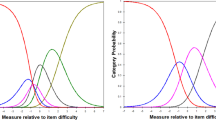Abstract
This study assesses the current and ideal levelsof academic and social integration within the University of PapuaNew Guinea as perceived by the students. In order to reducestudent attrition through developing an appropriate attritionpolicy and improving services, a comprehensive picture of thecurrent and ideal academic and social integration climate in theUniversity of Papua New Guinea was necessary. Previousattrition/retention research has not adequately described thevarying degrees of group differences in students' integrationprocess. Using the Tinto model and research instruments thatoperationalised the model, an institutional academic and socialintegration assessment instrument was developed for measuring theperceived current and ideal integration climate. Respondent'sperceived ideal ratings for 24 items representing five dimensionsof academic and social integration were higher than for thecurrent ratings. Significant differences were found between thecurrent and ideal perceptions of student groups in respect of a)students' informal contact with faculty; b) faculty concern forstudents' development and teaching and c) extra curricularactivities. Differences were found between the perceived ratingsof student groups on the basis of year of studies. Implicationsfor policy directives and discriminatory service delivery arealso discussed.
Similar content being viewed by others
References
Amankwah, Y. (1998). Report of the Working Group on the Proposal for Enrichment Program. Port Moresby: The UPNG Press.
Barr, C. (1994). Budget and Audit Report and Recommendations. Higher Education Project, Commission for Higher Education.
Baumgart, N.L. and Johnstone, J.N. (1977). ‘Attrition at an Australian University: A case study’, Journal of Higher Education 48(5), 553–570.
Bean, J.P. and Kuh, G.D. (1984). ‘The reciprocity between student-faculty informal contact and academic performance of university undergraduate students’, Research in Higher Education 21(4), 461–477.
Bean, J.P. (1980). ‘Dropouts and turnover: The synthesis and test of a causal model of student attrition’, Research in Higher Education 12(2), 55–187.
Bradley, M. and Cleveland-Inns, M. (1992). Valuing Diversity: Responding to the Needs of Adults Students at the University of Calgary, Report to the Division of Student Affairs. Calgary: University of Calgary.
Cope, R. and Hannah, W. (1975). Revolving College Doors: The Causes and Consequences of Dropping Out, Stopping Out and Transferring. New York: John Wiley & Sons.
Hills, R. (1997). Managing Changes in the University of Papua New Guinea, a key note address to the Annual General Meeting of the PNG Association of Education Admin-istrators, Port Moresby.
Iffert, R.E. (1957). Retention and Withdrawal of College Students, United States Department of Health. Washington: United States Government Printing Office.
Iffert, R.E. (1958). Retention and Withdrawal of College Students, Bulletin No. 1. Washington D.C.: U.S. Office of Education.
Kohen, A.I., Nestel, G. and Karmas, C. (1978). ‘Factors affecting individual persistence rates in undergraduate college programs’, American Educational Research Journal 15(2), 233–252.
Lewis, N.R. (1974). ‘An investigation of the difficulties experienced by students at tertiary institutions in Papua New Guinea’, PNG Journal of Education 10(2), 50–67.
Marsh, L.M. (1966). ‘College dropout: A review’, Personnel and Guidance Journal 44, 475–481.
Marks, E. (1967). ‘Student perceptions of college persistence, and their intellective, person-ality and performance correlates’, Journal of Educational Psychology 5(4), 210–221.
Meek, V.L. (1982). The University of Papua New Guinea: A Case Study in the Sociology of Higher Education. St Lucia: University of Queensland Press.
Neumann, Y. and Neumann, E.F. (1989). ‘Predicting juniors' and seniors' persistence and attrition: A quality of learning experience approach’, Journal of Experimental Education 52(2), 129–140.
Noland, R. (1976). Report of the Communication Committee: A Report Presented to the Faculty of Arts. University of Papua New Guinea.
OECD (1987). Universities Under Scrutiny. Paris: OECD Publication Unit.
Pantages, T.J. and Creedon, C.F. (1978). ‘Studies of college attrition: 1950–1975’, Review of Educational Research 48(1), 49–101.
Pascarella, E.T. and Chapman, D.W. (1983). ‘A multi-institutional path analytic validation of Tinto's Model of college withdrawal’, American Educational Research Journal 20(1), 87–102.
Pascarella, E.T. and Terenzini, P.T. (1979). ‘Interaction effects in Spady's and Tinto's Conceptual Models of college dropout’, Sociology of Education 52, 197–210.
Pascarella, E.T. and Terenzini, P.T. (1980). ‘Predicting freshman persistence and voluntary dropout decisions from a Theoretical Model’, The Journal of Higher Education 51(1), 60–74.
Pasearella, E.T. and Terenzini, P.T. (1978). ‘The Role of students background and levels of academic and social integration in college attrition: A test of a model’, Paper presented to the Annual Conference of American Education Research Association, Toronto, Canada, March.
Pascarella, E.T. and Terenzini, P.T. (1977). ‘Patterns of student-faculty informal interaction beyond the classroom and voluntary freshman attrition’, Journal of Higher Education 48(5), 540–552.
Spady, W.G. (1971). ‘Dropouts from higher education: Towards an Empirical Model’, Interchange 2(3), 38–62.
Summerskil, J. (1962). ‘Dropouts from College’, in Sanford, N. (ed.), The American College. New York: Wiley, pp. 627–655
Tabachnick, B.G. and Fidell, L.S. (1989). Using Multivariate Statistics, 2nd edn. New York: Harper Collins Publisher.
Terenzini, P.T and Wright, T.M. (1987). ‘Influences on students' academic growth during four years of College’, Research in Higher Education 26(2), 161–179.
Terenzini, P.T., Theophilides, C. and Lorang, W.G. (1984). ‘Influences on students' percep-tions of their academic skill development during college’, Journal of Higher Education 55(5), 621–636.
Tinto, V. (1975). ‘Dropout from higher education: A theoretical synthesis of recent research’, Review of Educational Research 45(1), 89–122.
Tinto, V. (1987). Leaving College-Rethinking the Causes and Cures of Student Attrition. Chicago: University of Chicago Press.
Tinto, V. (1992). ‘Student attrition and retention’, in Clark, B.R. and Necre, G. (eds.), The Encyclopedia of Higher Education. Oxford: Pergemon Press, pp. 1697–1709.
Author information
Authors and Affiliations
Rights and permissions
About this article
Cite this article
Mannan, M.A. An assessment of the academic and social integration as perceived by the students in the University of Papua New Guinea. Higher Education 41, 283–298 (2001). https://doi.org/10.1023/A:1004186830125
Issue Date:
DOI: https://doi.org/10.1023/A:1004186830125




